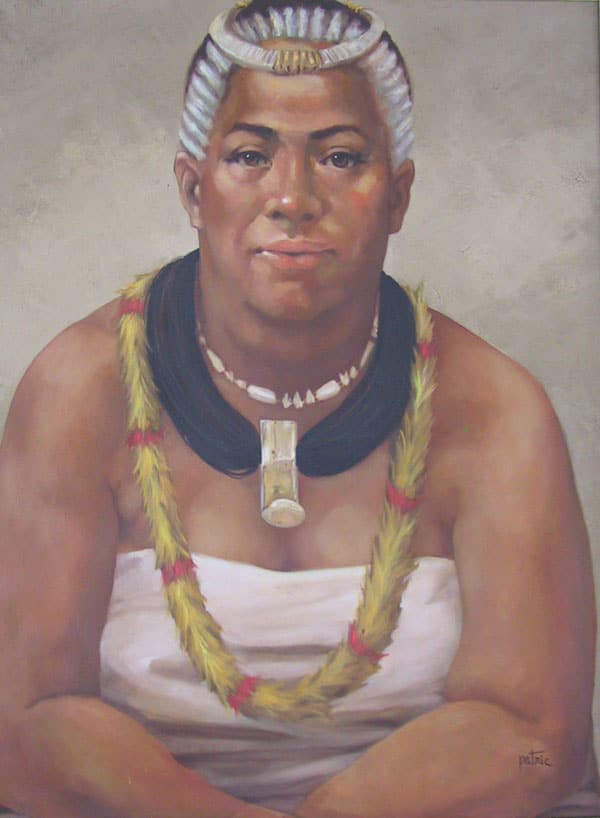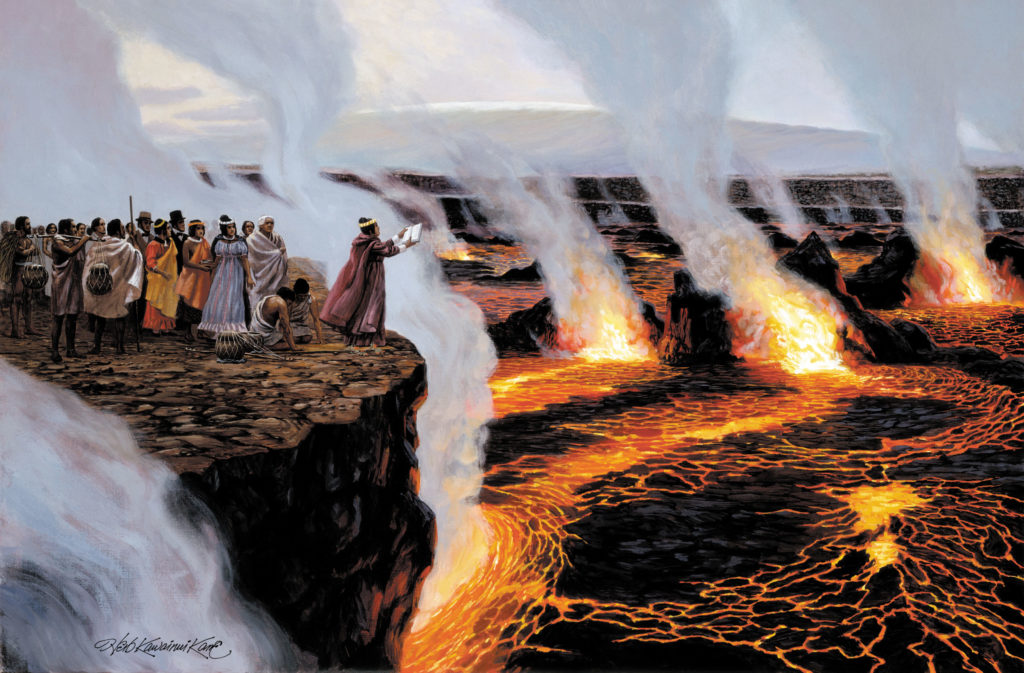Hawaiians Question New Ideas and Beliefs
Some of the teachings of the missionaries the Hawaiians accepted very easily. Other things they did not understand. It took time to make changes. People did not believe everything they were told. As time went on, the missionaries tried to prove to Hawaiians that they had come to help them.
The missionaries had to learn the Hawaiian language in order to communicate. Since nothing had been written down before, they had to listen carefully to what they heard. They learned that the Hawaiian language had twelve letters instead of twenty-six in the English alphabet. They also set out to print the first books in the Hawaiian language. Since they had brought a printing press, they put it to work. For days after the first printing of words on paper, the print shop was crowded with people. Even the high chiefs came to see the amazing machine. From that time on, the press barely rested. First spellers and primers, then Bibles and songbooks, were printed. Ali‘i, including Ka‘ahumanu herself, wanted to learn to read and write, skills that were often referred to as “palapala.”
It took longer for the missionaries to bring their religion, sometimes called “pulepule,” to the Hawaiian people. The importance of reading and writing was more accepted than belief in the Western god. The singing people liked, but most were not comfortable with the missionaries’ idea of one god instead of their many gods. Even the idea of a “trinity” (a three-in-one god like the “Father-Son-Holy Spirit”) was completely different from the gods they had always known. However, Ka‘ahumanu showed continued interest in the missionaries’ teachings and support for their beliefs. She, along with hundreds of others, went to church services, but many more attended schools. Ka‘ahumanu believed that the missionaries were trying to help her people, so she even asked to be baptized. After that, hundreds followed her example.
Over a long period of time, many Hawaiians came to accept the Christian religion. But many still practiced their own beliefs that honored traditional Hawaiian gods. These two systems of belief existed side by side in the 1800s and still do to this day. Many people in Hawai‘i believe in and practice parts of both traditions.


